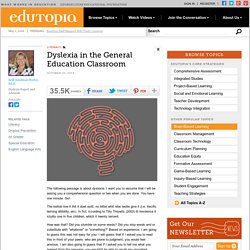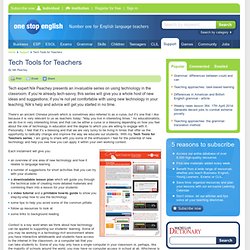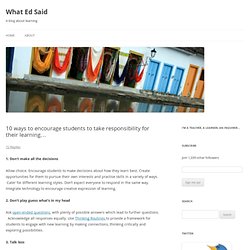

Dyslexia in the General Education Classroom. The following passage is about dyslexia.

I want you to assume that I will be asking you a comprehension question or two when you are done. You have one minute. Go! The bottob line it thit it doet exitt, no bitter whit nibe teotle give it (i.e. ttecific leirning ditibility, etc). In fict, iccording to Tilly Thiywitz (2003) itt trevilence it ictuilly one in five children, which it twenty tercent. How was that? You just experienced dyslexia for one minute. What can a general education teacher do to help? Understand Dyslexia Let's debunk a few of the myths and misconceptions right now. Seeing letters or words backward (In fact, reversing letters and words is developmentally normal through the first grade.) It is often said that dyslexia is an "umbrella term" when, in fact, it has a very specific definition. It is characterized by difficulties with accurate and/or fluent word recognition and by poor spelling and decoding abilities.
Understand the Role of Accommodations.
Tech Tools for Teachers. By Nik Peachey Tech expert Nik Peachey presents an invaluable series on using technology in the classroom.

If you’re already tech-savvy, this series will give you a whole host of new ideas and suggestions; if you’re not yet comfortable with using new technology in your teaching, Nik’s help and advice will get you started in no time. There’s an ancient Chinese proverb which is sometimes also referred to as a curse, but it’s one that I like because it is very relevant to us as teachers today: “May you live in interesting times.” As educationalists, we do live in very interesting times and that can be either a curse or a blessing depending on how you feel about the role of technology in education and the degree to which you are willing to engage with it.
Personally, I feel that it’s a blessing and that we are very lucky to be living in times that offer us the opportunity to radically change and improve the way we educate our students. Each instalment will give you: Getting Started Nik Peachey. 15 Free Learning Sites. It can be hard to keep up with the ever-growing list of free educational sites out there, much less distinguish which ones will best meet your needs and help you learn skills you really need without shelling out big bucks.
New sites are always being launched and even those that have been on the scene for a while sometimes don’t garner enough attention to make it onto your radar, often getting overshadowed by more high-profile sites. As a result, even those who are in the ed tech loop can miss out on some seriously helpful free learning sites. Here our content partners at Online College highlight just a few of these under-the-radar free learning sites, that run the gamut from providing full degree programs to simple job-skill training tools, offering a little something for every kind of learner.
Scitable : Scitable, created by NatureEducation, is an online collaborative space for science learning.
Literacy. EOIB - English 2. Pronunciation. EOIB - English 2. Learner needs & differentiation. Bloggers. BE. The AWL Highlighter. Materials Design. MI. Digital Learning. ELT. CLIL. 10 ways to encourage students to take responsibility for their learning… 1.

Don’t make all the decisions Allow choice. Encourage students to make decisions about how they learn best. Create opportunities for them to pursue their own interests and practise skills in a variety of ways. Cater for different learning styles. 2. Ask open-ended questions, with plenty of possible answers which lead to further questions. 3. Minimise standing out front and talking at them. 4. Talk about your own learning. 5. Get your students to write down what they learned, whether they enjoyed a particular learning experience, what helped their learning, what hindered their learning and what might help them next time. 6. Record student thinking and track development over time.